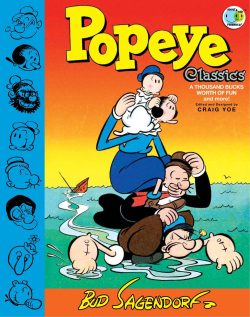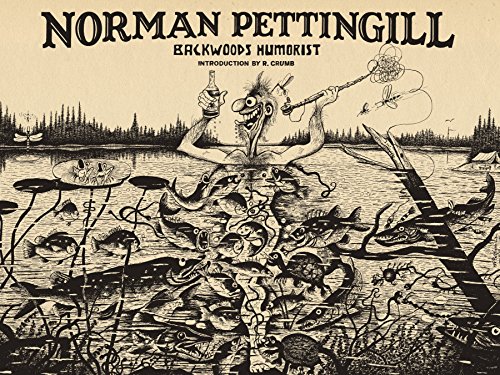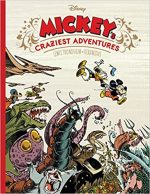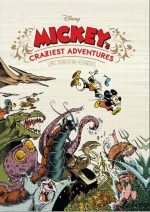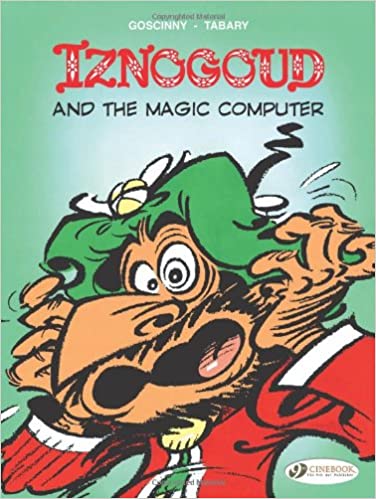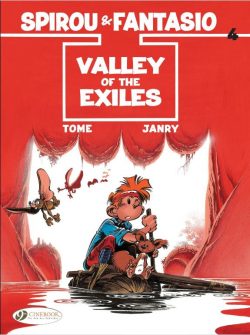
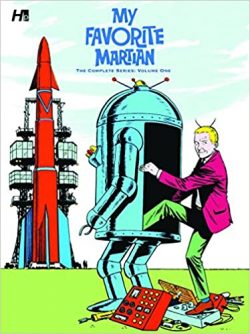
By Paul S. Newman, Bob Ogle, Russ Manning, Dan Spiegle, Sparky Moore, Mike Arens & various (Hermes Press)
ISBN: 978-1-932563-79-5(HB) eISBN 978-1-932563-79-2
My Favorite Martian debuted in America in September 29th 1963, the forerunner of a miniature golden age of fantasy-themed sitcoms that included Living Doll, Bewitched, I Dream of Jeannie, The Ghost and Mrs Muir, Nanny and the Professor and many more: all operating on the premise of a science fictional or magical character acting as disruptive outsider and playing hob with “normal†American domestic life.
Coming in at the height of the Space Race, My Favorite Martian ran for three seasons and 107 episodes – the last of which premiered in May 1966 – and particularly shone because of the laidback style, intriguing music, strong scripts and the unparalleled gifts of lead actor Ray Walston and his “straight man†young Bill Bixby. Many episodes haven’t dated at all – at least in term of gags, if not cultural attitudes, something which sadly, cannot be said of Disney’s 1999 movie reboot…
Like most successful television properties, the series spawned a ton of nifty merchandise, including a comic book (nine issues running between January 1964 and October 1966) from licensing specialists Gold Key. Here, the first five are curated in an imposing hardcover (or eBook) collection from comics-resurrection and nostalgia specialists Hermes Press. It’s especially welcome as it unearths incidences of masterful lost work from some of our industry’s biggest names…
Preceded by stunning H. Greer game box art, Kate Walston’s Foreword ‘My Dad and My Favorite Martian’ reminisces over her dad’s career, friendship with co-star Bixby and the show before a photo from the pilot episode (the volume is liberally and peppered throughout with photos) precedes Daniel Herman’s Introduction discussing the careers of ‘The Artists of My Favorite Martian’.
The writers were “King of Comics†Paul S. Newman – whose astoundingly prolific career encompassed scripts for almost every publisher in the US on titles such as The Lone Ranger, Tom Corbett – Space Cadet, Turok, Son of Stone, Dr. Solar, Patsy Walker, G.I. Combat, House of Mystery ad infinitum – and Bob Ogle, an animator and voice actor who also wrote for Gold Key’s vast stable of ties-in and TV shows such as Shirt Tales, Wheelie and the Chopper Bunch, The Kwicky Koala Show and Yogi’s Gang.
The premise of My Favorite Martian was supremely evergreen, yet smartly contemporary. The pilot episode revealed how 450-year old Martian anthropologist Exigius 12½ is marooned on Earth after his ship almost collides with experimental American rocket-plane X-15, fired from Edwards Air Force Base. The crash is observed by passing journalist Tim O’Hara who takes the alien under his wing – and into his lodgings as his Uncle Martin – until the voyager can repair his wrecked vessel.
Sadly, Tim has a nosy landlady in busybody Mrs Brown and Martin has strong opinions, incredible scientific gifts, a whole raft of uncanny powers and no luck at all…
The comic launched in January 1964 and, behind a photo-cover, was graced with artwork from one of the industry’s greatest exponents. Russ Manning (Magnus, Robot Fighter, Tarzan, Star Wars) was one of comics’ greatest stylists and perfectly caught the tone of the show in Newman’s ‘My Favorite Martian’, which adapted and reprised the origin before revealing how Tim’s scoop on the X-15 – and suppression of his meeting with Martin – lead to his being arrested by the authorities for espionage…
No sooner has the Martian finagled Tim out of a cell and cleared his name than he’s risking his new friend’s life by having them infiltrate a top-secret project in search of a fuel source necessary to power the hidden Martian ship he’s gradually rebuilding…
The romp ends with a monochrome single page gag highlighting Martin’s ability to talk to animals, probably drawn by Mike Arens.
Issue #2 carries a July 1964 cover-date and is the only one to employ an illustrated rather than photographic cover. It and the interiors that follow are by the criminally unsung Dan Spiegle, whose career was two-pronged and incredibly long. Born in 1920, Spiegle wanted to be a traditional illustrator but instead fell – after military service in the Navy – into comics at the end of the 1940s. He was equally adept at dramatic and cartoon narrative art and his portfolio includes impeccable work on Hopalong Cassidy, Rawhide, Sea Hunt, Space Family Robinson, Blackhawk, Crossfire, Nemesis, Scooby Doo, Who Framed Roger Rabbit?, Indiana Jones, the Hanna-Barbera stable and so much more.
He opens here with ‘Destination Mars’ as a well-meaning intervention by the landlady’s daughter ruins Martin’s latest fuel formulation and he is driven by frustration and loneliness to try stowing away on a robotic Mars probe built by the backward earthmen…
This is counterbalanced by a romantic flight of whimsy in ‘Priscilla Loves Melvin’ as Martin intervenes – with catastrophic effect – to reunite a lovesick zoo gorilla with her missing spouse…
Another monochrome gage strip detailing the danger of Mrs Brown’s pies segues into #3 (February 1965) with Sparky Moore (Rin Tin Tin, The Three Stooges) assuming visual control for ‘It’s a Small World’, with Martin and Tim off to Africa in search of an ancient Martian crash-site and discovering an astonishing connection to the Martian’s past! ‘Sighted! Green Monster’ reveals a startling side effect of Martian food on human physiology when Tim and Martin have a picnic in Florida and set off a E.T. panic…
Ogle took over scripting and Mike Arens (Dale Evans, Chuckwagon Charley, Roy Rogers) became regular artist with MFM #4 (May 1965), nicely balancing the drama and fantasy elements for ‘Once Upon a Ding-Ding’, wherein a trip to the Zoo and an incautious nap manifests a beloved beast of Mars from Martin’s ferociously potent, semi-autonomous subconscious with the now-traditional calamitous results, after which the visitor’s attempts to diminish his own awesome powers inadvertently revert Tim to toddler size and threaten to rejuvenate him out of existence in ‘Kid Stuff’…
This initial outing concludes with August 1965’s fifth issue, opening with ‘The Creep of Araby’, as Martin’s latest invention – a molecular duplicator – complicates and endangers Tim’s life just as he’s about to interview a desert sultan. Later, when the Martian’s escaped and now-physically realised subconscious starts recklessly granting wishes in ‘Martin’s Other Self’, Tim has to take extraordinary action to circumvent the chaos that follows…
Wrapping up the vintage wonderment, ‘Memorabilia, Photos and Publicity’ offers a collection of merchandise, art – such as colouring book covers, game and model kit boxes – and publicity stills (including show costume designs) to delight fans old and freshly-minted.
TV-themed compendia of screen-to-page magic were an intrinsic part of growing up in Britain for generations and still occur every year with only the stars/celebrity/shows changing, not the package. The show itself has joined the vast hinterland of fantasy fan-favourites immortalised in DVD and streamed all over the world, but if you want to see more, this rewarding tome is a treat you won’t want to overlook.
My Favorite Martian® © 1966-1965 and 2011 The Contingent Trust of the Jack and Florence Chertok Trust dated October 22, 1990/ Jack Chertok Television, Inc; Peter Greenwood Licensing Manager Worldwide. Reprinted with Permission. All Rights Reserved.

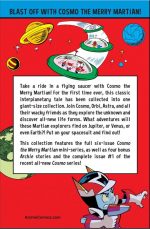
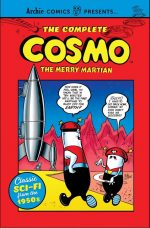

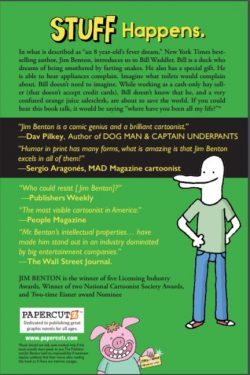
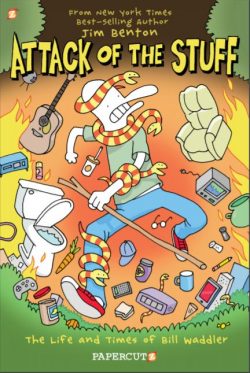
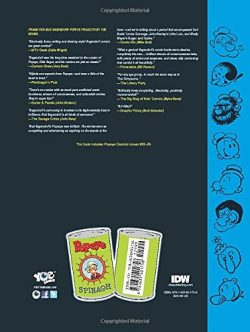 .
. 